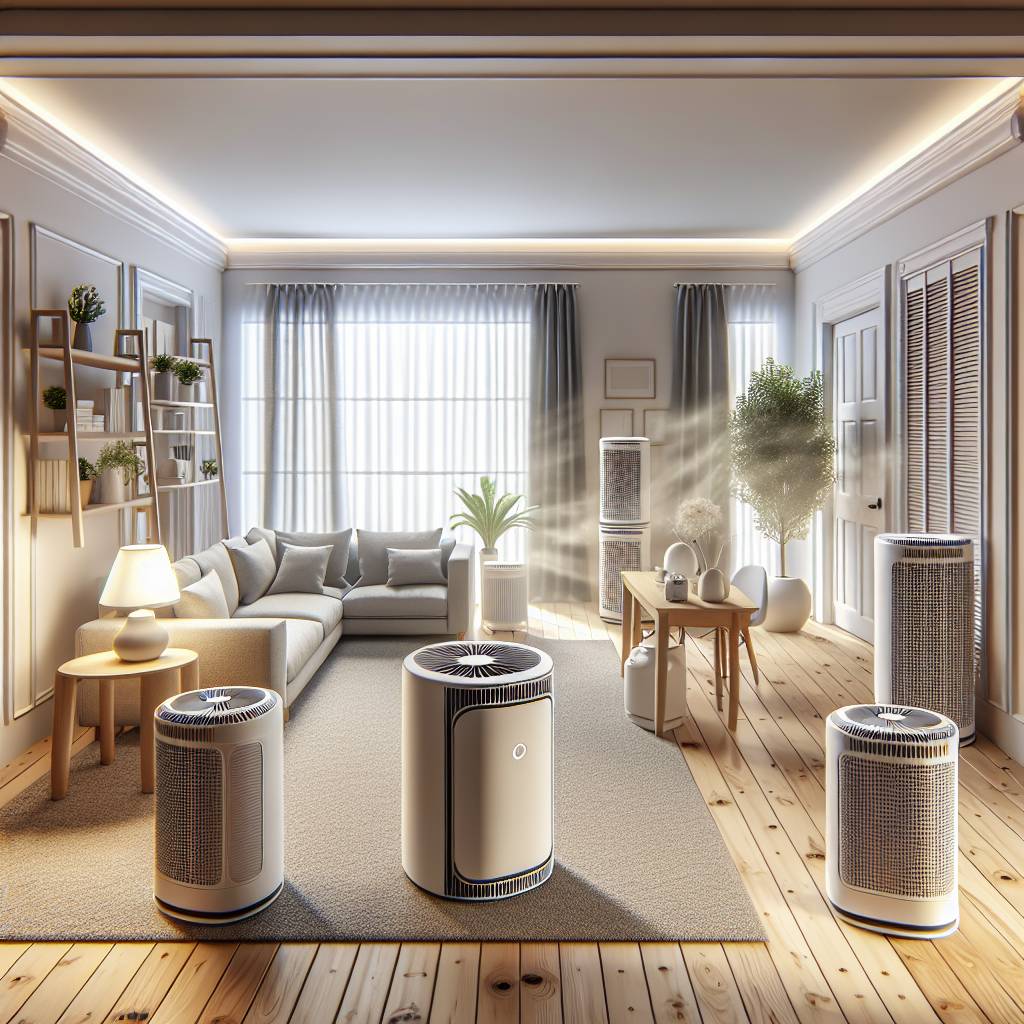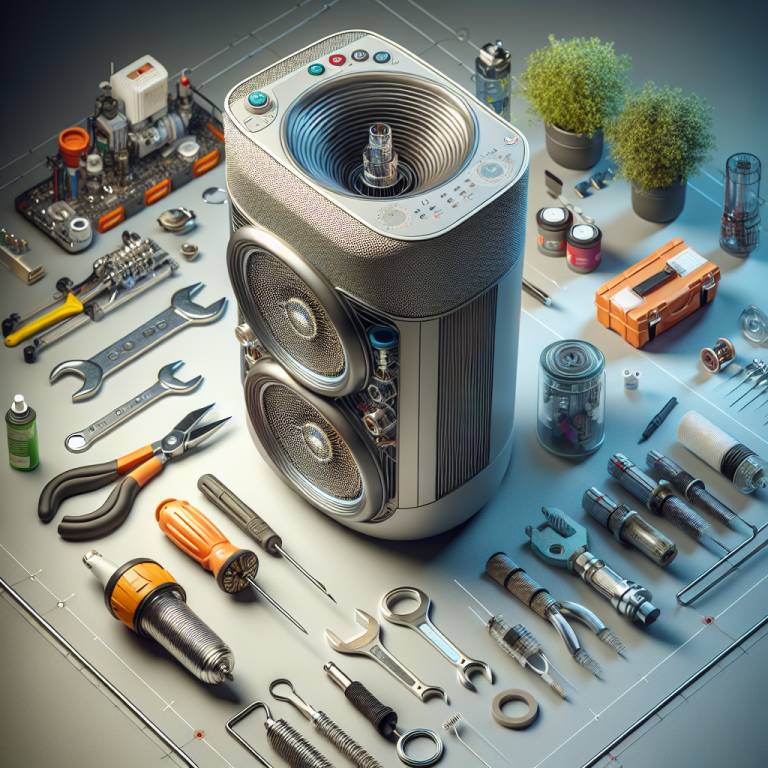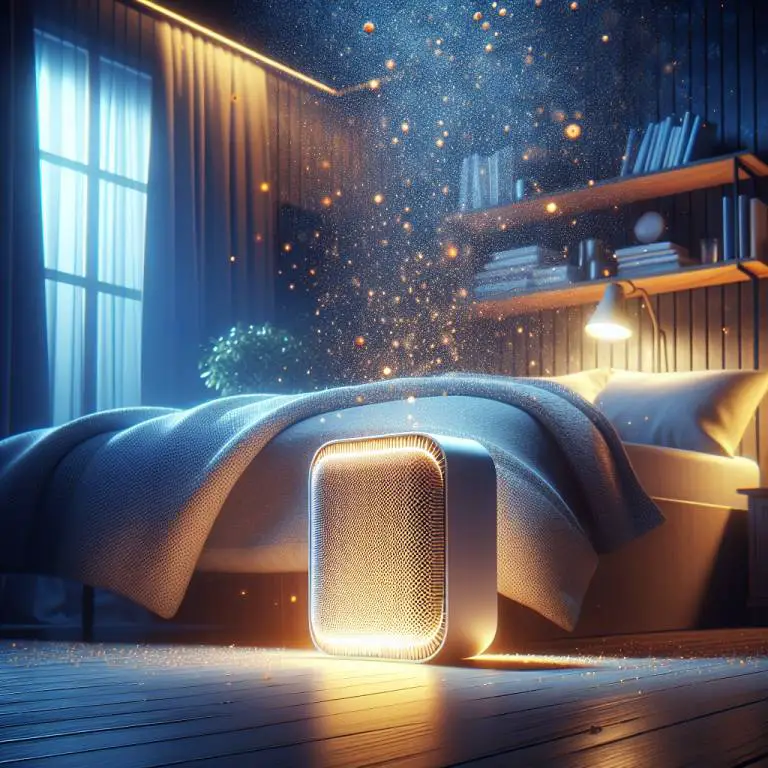Improving Indoor Air Quality For Asthma With Air Purifiers
Air purifiers work by removing pollutants and allergens from the air, which can significantly improve indoor air quality. This is especially beneficial for people with asthma as it reduces their exposure to triggers that can cause asthma attacks. By using an air purifier, individuals with asthma may experience fewer symptoms and better overall health.

How do air purifiers improve indoor air quality for asthma sufferers?
Air purifiers work by cleaning the air inside a room, which is especially beneficial for people with asthma. They use filters to trap pollutants and particles that can trigger asthma symptoms. This process helps in reducing the number of irritants in the air, making it easier for asthma sufferers to breathe.
These devices are designed to capture a wide range of airborne particles, including dust, pollen, and pet dander. By removing these triggers from the environment, air purifiers can significantly decrease the likelihood of asthma attacks. Cleaner air means fewer symptoms like coughing, wheezing, and shortness of breath for those with asthma.
Moreover, some air purifiers are equipped with HEPA filters, known for their efficiency in trapping very small particles. These high-efficiency filters are particularly effective at improving indoor air quality by capturing more than 99% of airborne pollutants that are as small as 0.3 microns. This level of filtration provides an added layer of protection against asthma triggers.
What types of pollutants can air purifiers remove that are harmful to people with asthma?
Air purifiers are capable of removing a variety of pollutants that pose risks to individuals with asthma. These include common allergens such as pollen, dust mites, and pet dander which often trigger allergic reactions and exacerbate asthma symptoms. By filtering these substances out of the indoor environment, air purifiers help reduce potential irritants.
Curious about improving indoor air for asthma? See why our favorite air purifier for asthma is a game-changer. Click to uncover its unique features.
In addition to allergens, these devices also target smoke and chemical vapors which can be particularly harmful to those with respiratory conditions like asthma. Smoke from cigarettes or cooking and volatile organic compounds (VOCs) emitted from paint or cleaning products can severely impact indoor air quality and trigger asthmatic responses.
Mold spores are another pollutant effectively removed by air purifiers. Mold growth in homes can lead to poor indoor air quality and pose serious health risks for individuals with asthma by triggering or worsening symptoms. Air purifiers equipped with HEPA filters excel at capturing mold spores circulating in the air, thus helping maintain a healthier living environment.
Are there specific features in air purifiers that benefit asthma patients more than others?
Certain features in air purifiers make them particularly beneficial for individuals suffering from asthma. For instance, HEPA filters stand out due to their ability to trap extremely fine particles that other filters might miss. This feature is crucial for capturing tiny irritants that could easily trigger an asthmatic episode.
Another significant feature is the presence of activated carbon filters alongside HEPA filters in some models. Activated carbon is effective at absorbing gases and odors such as VOCs and tobacco smoke which cannot be captured by HEPA filters alone. This combination ensures a broader range of pollutants is removed from the indoor environment.
Additionally, some advanced models come equipped with smart sensors that monitor the quality of indoor air and adjust their operation accordingly. These sensors ensure that the device works more efficiently when needed but conserves energy when pollutant levels are low. Such adaptive functionality ensures continuous protection against triggers without unnecessary energy consumption.
How does the size and placement of an air purifier affect its efficiency in managing asthma symptoms?
The size and placement of an air purifier play critical roles in its effectiveness at managing asthma symptoms. A unit too small for a room won’t filter the air efficiently enough to make a significant difference in reducing triggers. It’s important to choose an air purifier whose capacity matches or exceeds the square footage of the space where it will be used.
Placement also matters greatly; positioning an air purifier near common sources of pollution or areas where you spend most time increases its effectiveness. For example, placing it near a pet’s sleeping area or in bedrooms where individuals sleep can help ensure cleaner breathing zones around sensitive populations like those suffering from asthma.
Furthermore, avoiding obstructions around the device ensures optimal airflow through the unit allowing it to capture more pollutants effectively. Ensuring there’s enough clearance around the device prevents any hindrance to its intake or output vents which could compromise its performance thereby affecting its efficiency in alleviating asthmatic conditions.
| Air Purifier Feature | Benefit for Asthma Management | Explanation |
|---|---|---|
| HEPA Filter | Removes small particles | High Efficiency Particulate Air (HEPA) filters can remove at least 99.97% of dust, pollen, mold, bacteria, and any airborne particles with a size of 0.3 microns (µm). |
| Activated Carbon Filter | Removes gases and odors | Activated carbon filters can adsorb gases, odors, and VOCs, reducing the risk of respiratory irritation. |
| UV-C Light | Kills germs and bacteria | UV-C light can destroy the DNA of germs, viruses, and bacteria, preventing them from reproducing and causing infections. |
| Ionizer | Reduces airborne particles | Ionizers emit ions that attach to particles in the air, making them heavier and causing them to fall to the ground, thus removing them from the air you breathe. |
| Pre-Filters | Extends HEPA filter life | Pre-filters catch larger particles before they reach the HEPA filter, extending its life and maintaining its efficiency. |
| Smart Sensors | Automatically adjusts settings | Smart sensors can detect the level of air quality and automatically adjust the air purifier’s settings to filter the air as needed. |
| Quiet Operation | Improves sleep quality | Air purifiers with a quiet operation mode do not disrupt sleep, which is crucial for overall health and well-being, especially for individuals with asthma. |
Can using an air purifier reduce the need for asthma medication?
Using an air purifier may help some people with asthma manage their symptoms more effectively. This can lead to a reduced reliance on asthma medication over time. Air purifiers work by removing allergens and pollutants from the air, which are common triggers for asthma attacks.
However, it’s important to note that while air purifiers can help improve indoor air quality, they should not be seen as a replacement for asthma medication. Consulting with a healthcare provider is crucial before making any changes to medication routines.
What are the best practices for maintaining an air purifier to ensure optimal benefits for asthma sufferers?
To ensure that an air purifier works effectively, regular maintenance is essential. This includes cleaning or replacing filters as recommended by the manufacturer. A clogged filter cannot trap pollutants efficiently, reducing the purifier’s effectiveness.
Additionally, placing the air purifier in a suitable location is vital. It should be in a room where the asthma sufferer spends most of their time. Keeping doors and windows closed while the purifier is running will also help maintain clean indoor air quality.
How quickly can someone with asthma expect to see improvements in their symptoms after using an air purifier?
The time it takes to notice improvements in asthma symptoms after using an air purifier can vary from person to person. Some individuals might see a difference within a few days, especially if airborne allergens significantly trigger their symptoms.
For others, it might take several weeks to observe noticeable changes. Consistent use of the air purifier and adherence to maintenance guidelines are key factors in achieving optimal results.
Final Thoughts
Air purifiers can be a valuable tool for individuals with asthma looking to improve their indoor air quality and manage symptoms more effectively. While they may help reduce dependence on medications for some, they should complement prescribed treatment plans rather than replace them.
Maintaining an air purifier properly and being patient with results are crucial steps towards creating a healthier living environment for asthma sufferers. Always consult healthcare professionals when considering adjustments to asthma management strategies.






